5 Ways to Teach the Alphabet
Disclosure: This post contains affiliate links to Amazon. See my disclosure for details.
Teaching the alphabet is foundational for reading and writing. Around the age of 2, children begin showing interest in learning alphabet letters. While some kids learn letters very quickly, others need more repetition and time to learn letters. Today I’m going to share with you some of my favorite ways to teach the alphabet to little ones.
Here’s what a preschooler should know before kindergarten:
- Recite/sing the alphabet
- Identify uppercase letters
- Identify lowercase letters
- Match uppercase letters to lowercase letters
- Identify the sounds each letter makes
- Traces letters
- Write some alphabet letters
Here are my five favorite ways to teach the alphabet to children.
1. Read Alphabet Books
Read all sorts of alphabet books to your children, even starting as babies. The repetition will really help your child learn the alphabet at a young age. When my oldest was born, I was surprised at how many alphabet books we had been given as gifts. We loved reading all of them because they were different from each other. I found that around 18 months both my kids really started enjoyed reading alphabet books. Here are a few of our alphabet books:
Here are some of our favorite alphabet books.
The Three Bears ABC Chicka Chicka Boom Boom (Board Book)
Chicka Chicka Boom Boom (Board Book) Eating the Alphabet
Eating the Alphabet The Farm Alphabet Book
The Farm Alphabet Book G is for Goat
G is for Goat Harold’s ABC (Purple Crayon Book)
Harold’s ABC (Purple Crayon Book) I Stink! (Kate and Jim Mcmullan)
I Stink! (Kate and Jim Mcmullan) Bad Kitty
Bad Kitty The Letters Are Lost!
The Letters Are Lost! AlphaOops!: The Day Z Went First
AlphaOops!: The Day Z Went First Z Is for Moose (Booklist Editor’s Choice. Books for Youth (Awards))
Z Is for Moose (Booklist Editor’s Choice. Books for Youth (Awards)) Q Is for Duck: An Alphabet Guessing Game
Q Is for Duck: An Alphabet Guessing Game ABC T-Rex
ABC T-Rex Work: An Occupational ABC
Work: An Occupational ABC
2. Sandpaper Letters
Using sandpaper letters is a great way to introduce letters to children. My favorite ones are Didax Sandpaper Tracing Letters or School Supply Tactile Letters Kit
. This is a perfect pre-writing activity because children use their finger to trace the sandpaper letters. I love that the cards tell the child where to start and which direction to go.
Sandpaper letters are part of the Montessori approach to learning how to read. These letters provide a tactile and visual way to help children learn the alphabet. In the Montessori method, you teach letters to a child in the 3-period lesson.
1st period is introducing the letter (“this is” period). Show your child the letters. Have them trace the sandpaper letters. The best way to teach children alphabet letters is by telling them their phonetic sound. So each time they trace the letter, say the phonetic sound.
2nd period is association (“show me” stage). Ask your child to follow simple directions with the letters. For example, please pick up the /m/ and set it by the window. Continue to do this with each letter several times to reinforce this. If it is too difficult, return to the first period.
3rd period is recall (“what is this?” period). Only go to this period when they’ve mastered the other two periods. Put a letter in front of the child and say “Can you trace this and tell me what it is?” Continue with the other letters in the same way.
When you use these sandpaper letters, you are teaching them 3 things: the shape of letters, the feel of its shape and how its written, and how you pronounce its sound.
3. Alphabet Puzzles
I think teaching letters with alphabet puzzles are an amazing tool for teaching the alphabet. This is my favorite puzzle, from Melissa and Doug. It’s a beautiful wooden puzzle with neat pictures. This is a great way to practice vocabulary and verbal skills, too.
4. Sensory Activities
While some kids learn letters very quickly, others need more repetition and time to learn letters. I’ve always said that children learn best when they have many multisensory experiences with letters.
I love to incorporate sensory play into learning alphabet letters. When children have meaningful activities with repeated exposure, they start to pick up on letter names. One way is this alphabet ice excavation activity.
You could also make a colorful sensory bin!
Or practice writing letters in the sand, like this sensory writing tray.
5. Alphabet Printables
I have quite a few alphabet printables on my blog, but here is a set that is easy and fun for preschoolers. You will need Do a Dot Markers or dot stickers to fill in the circles.
I love pulling printables out for a quick and easy activity. I’m always advocating for hands-on learning, but sometimes it’s nice to do a few paper activities. Using Do a Dot markers or dot stickers is great for hand-eye coordination and fine motor skills.
If you’d like to download this printable, just click the button below.

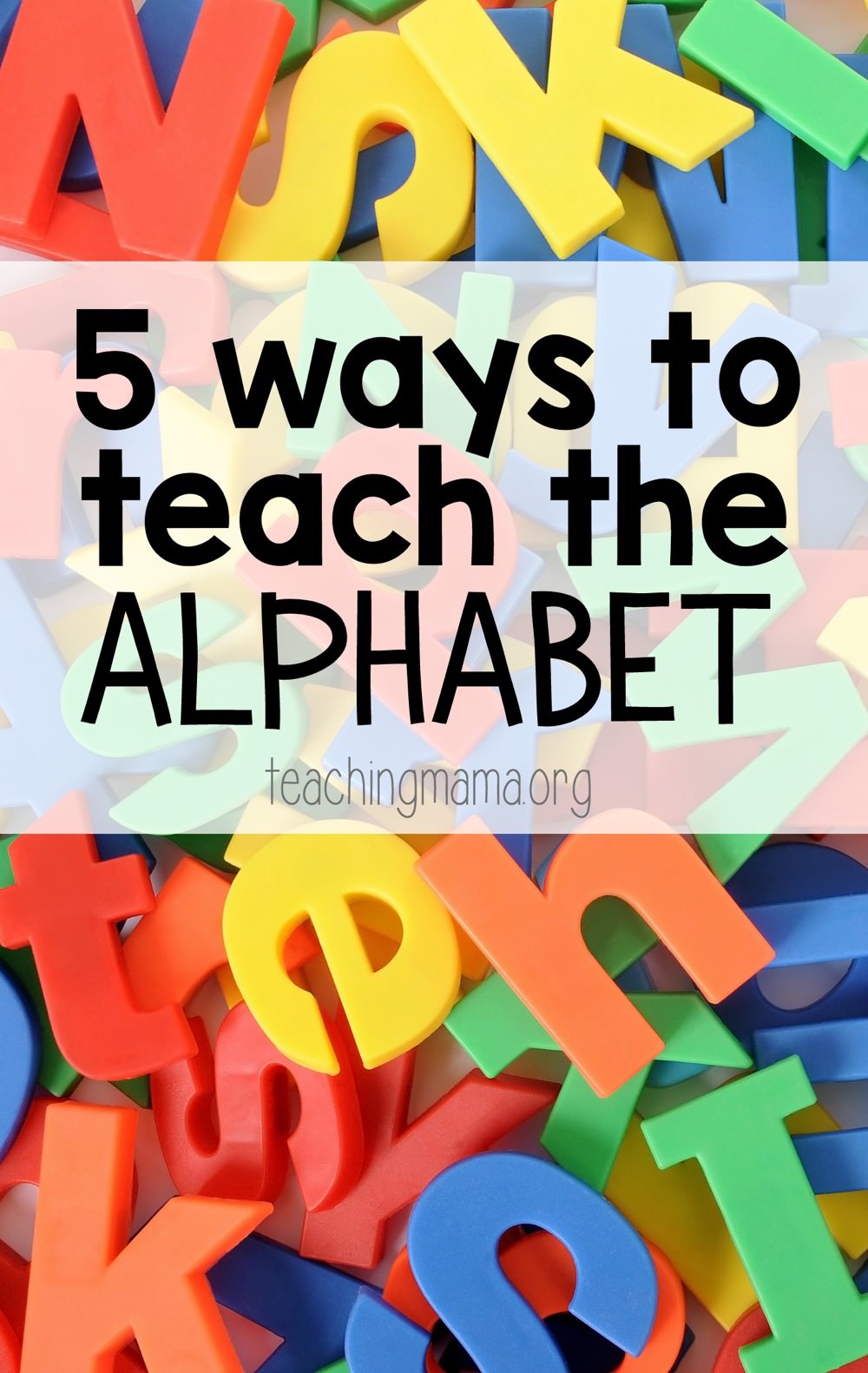
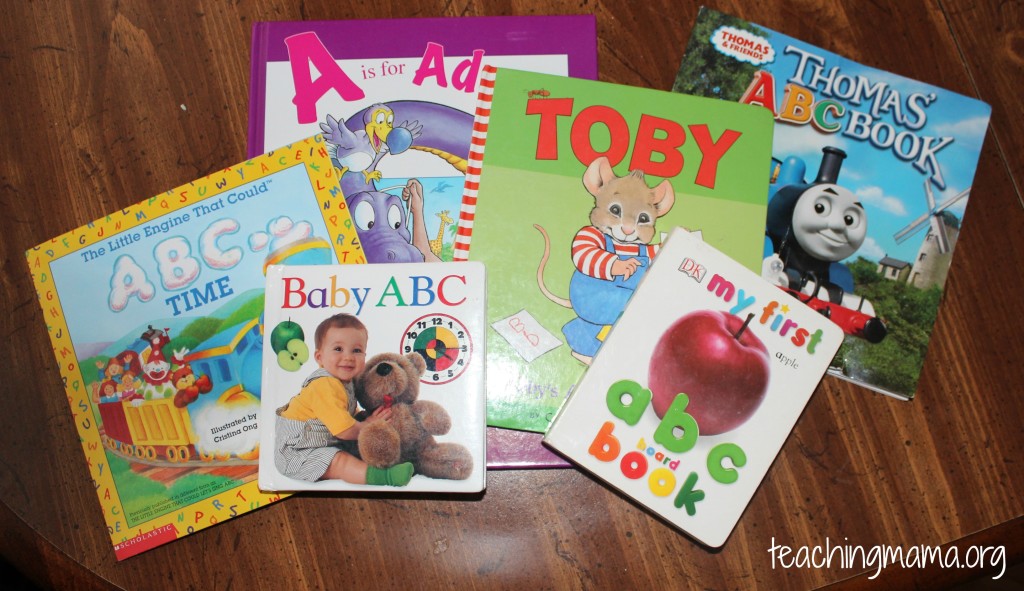



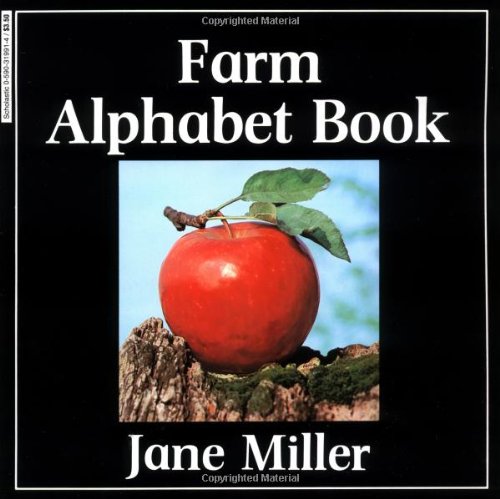










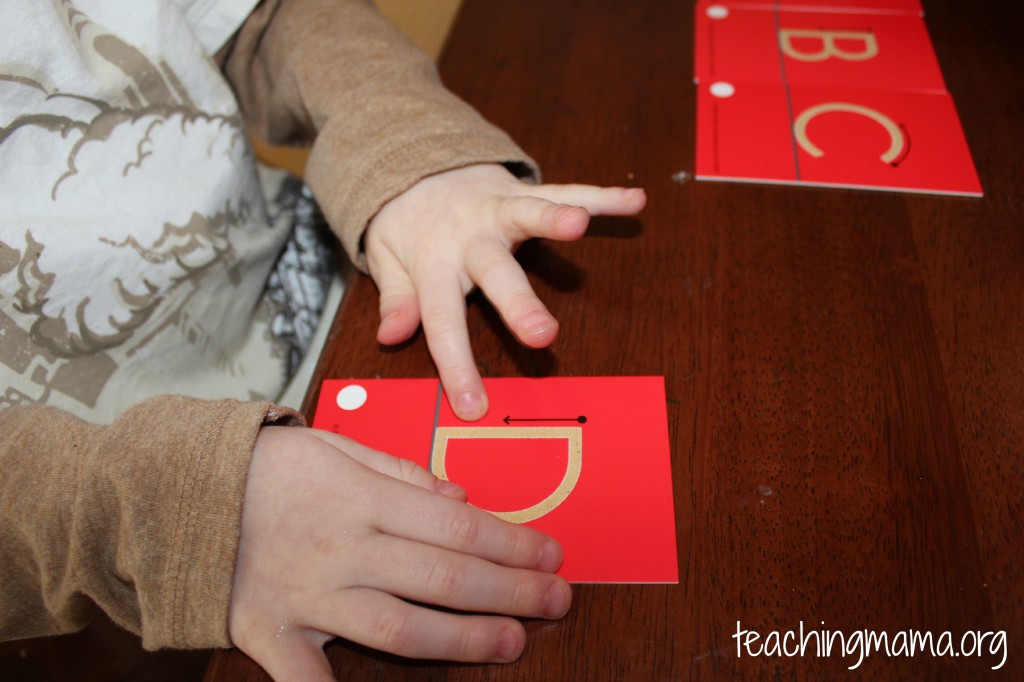
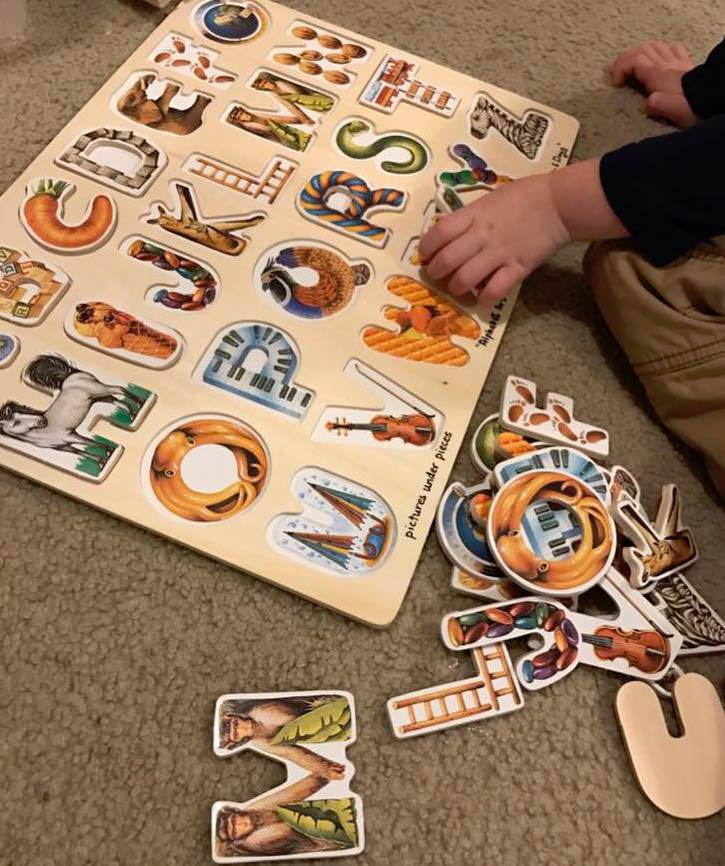
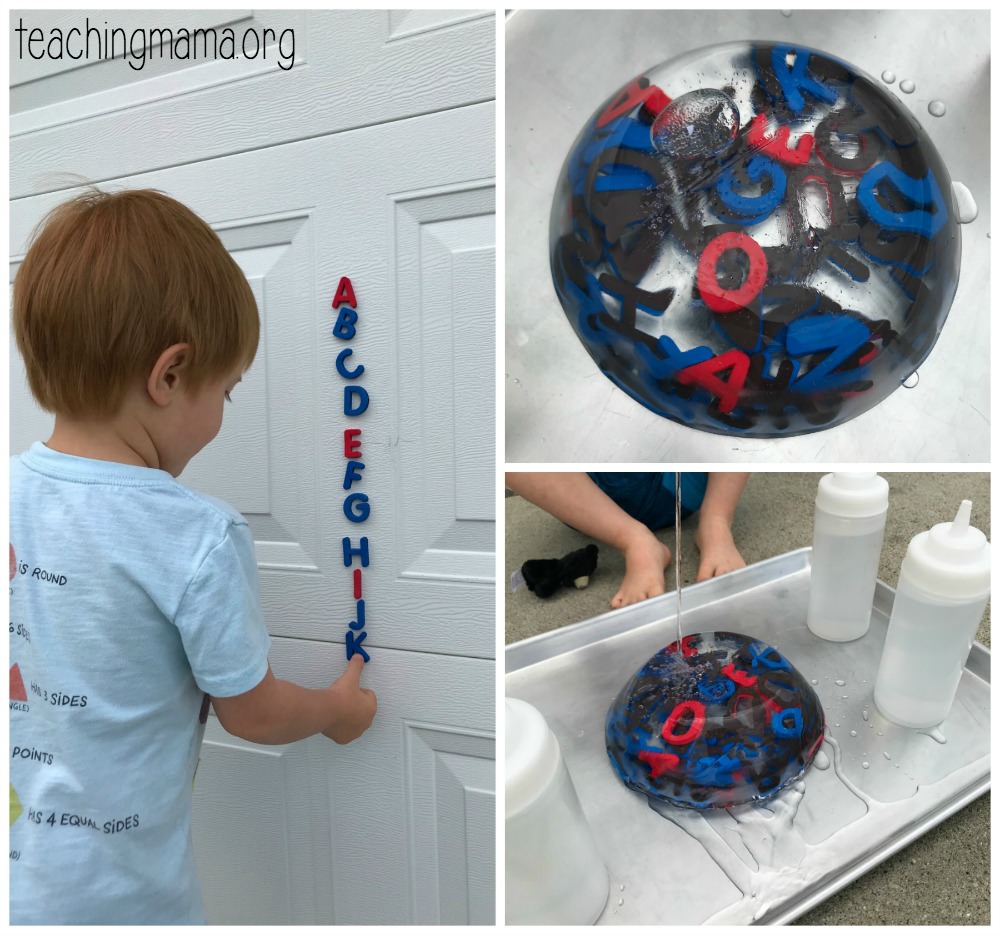
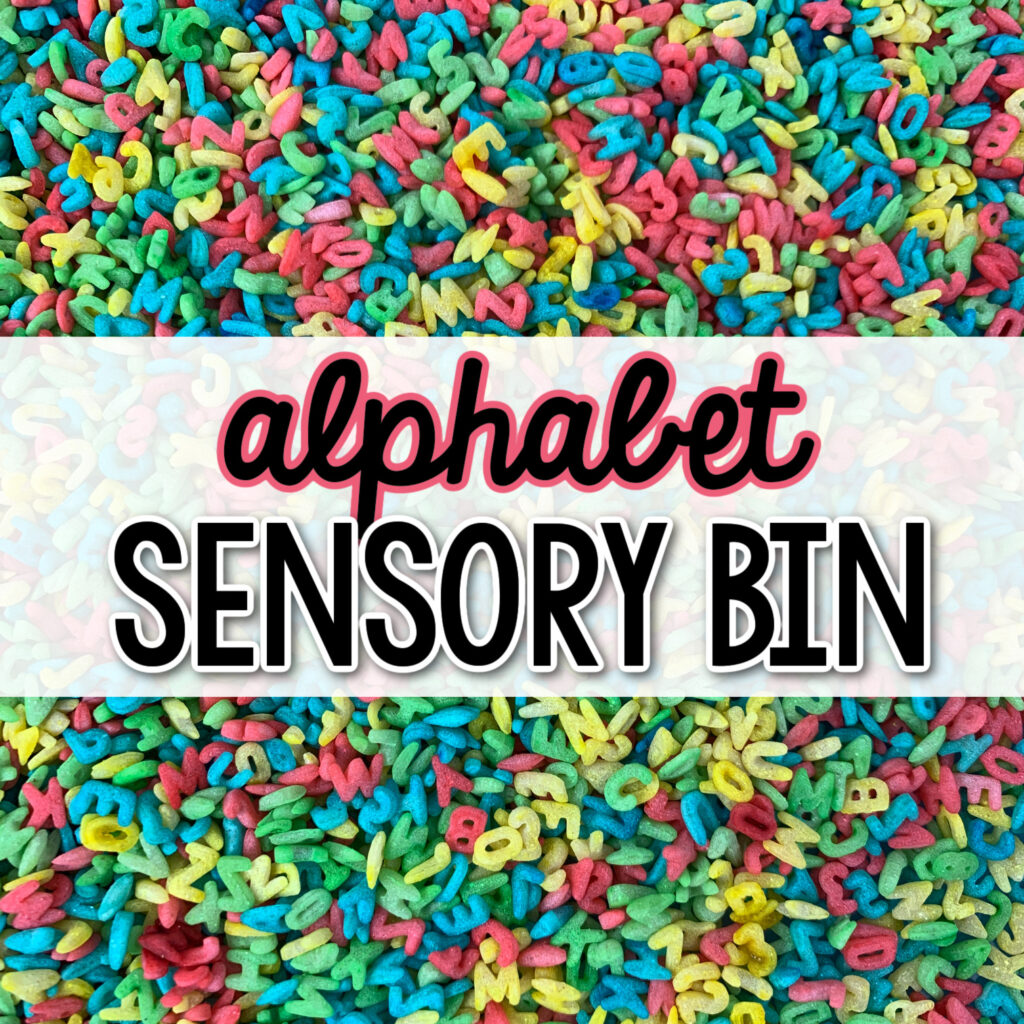
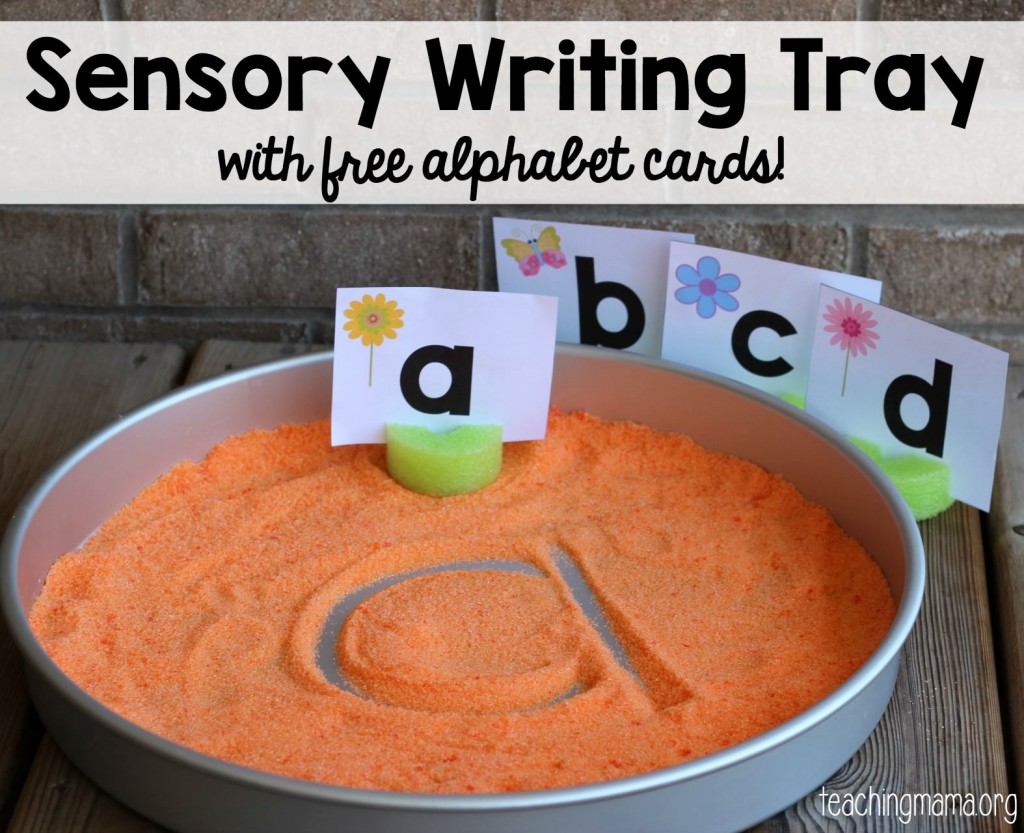
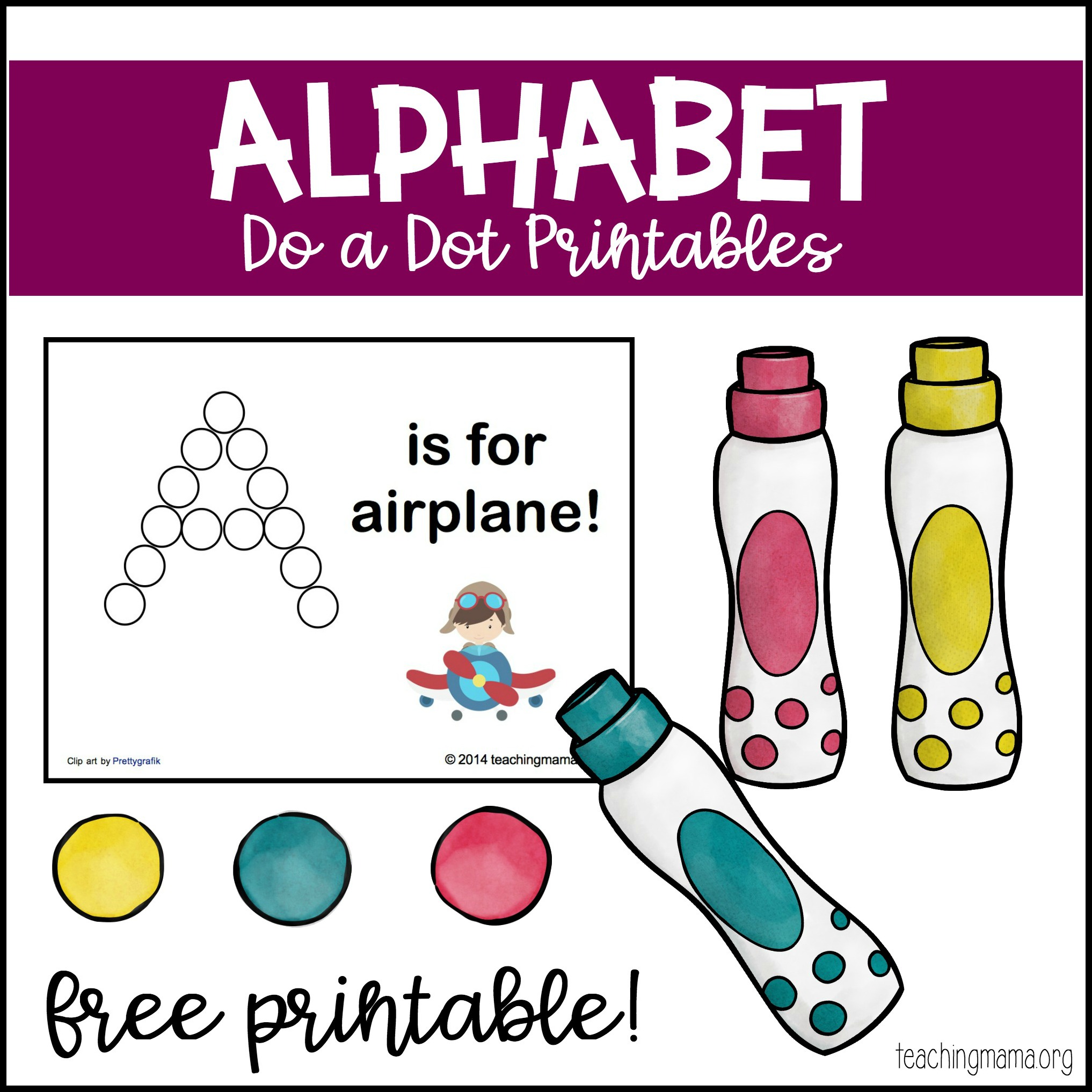
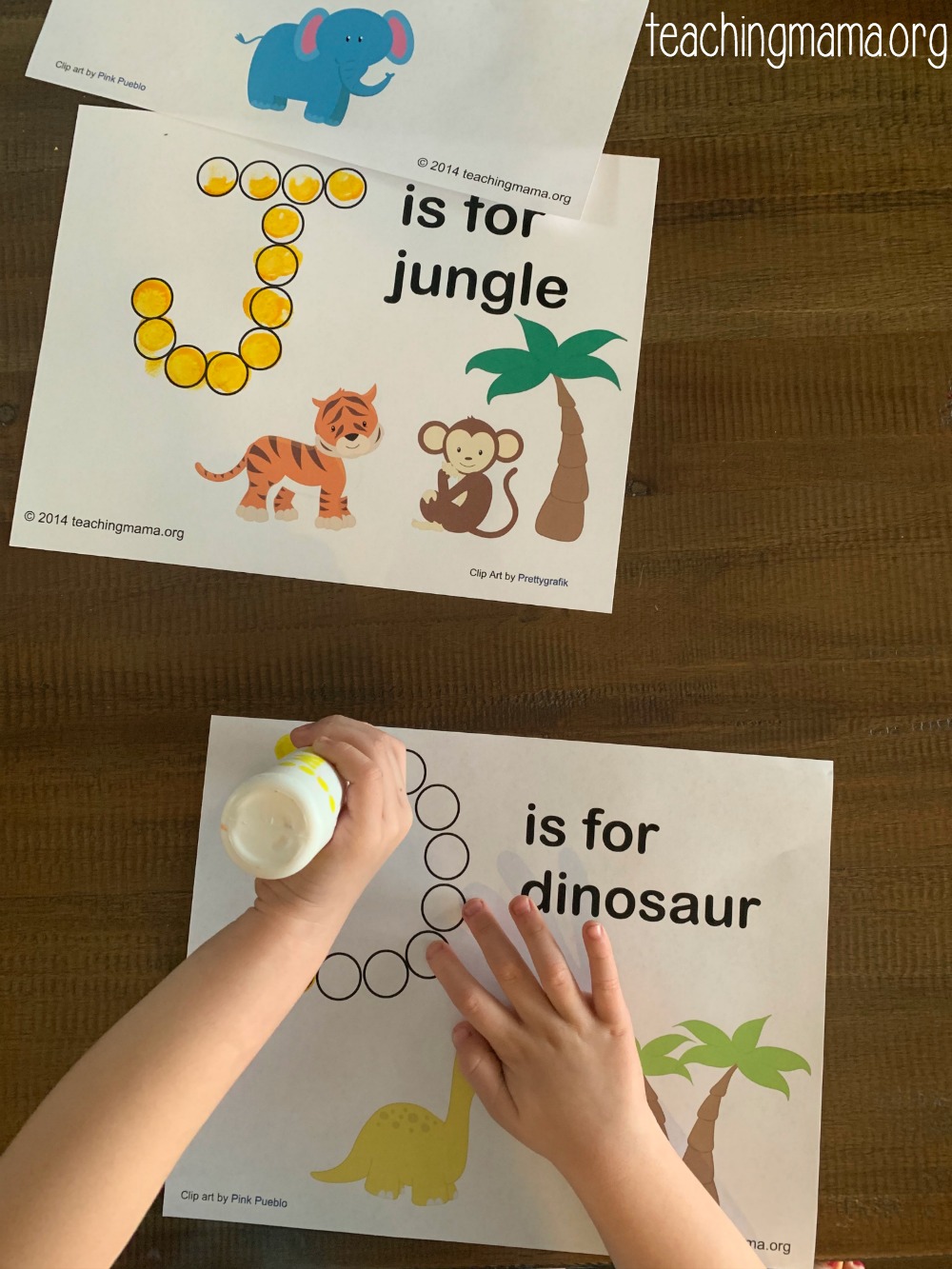

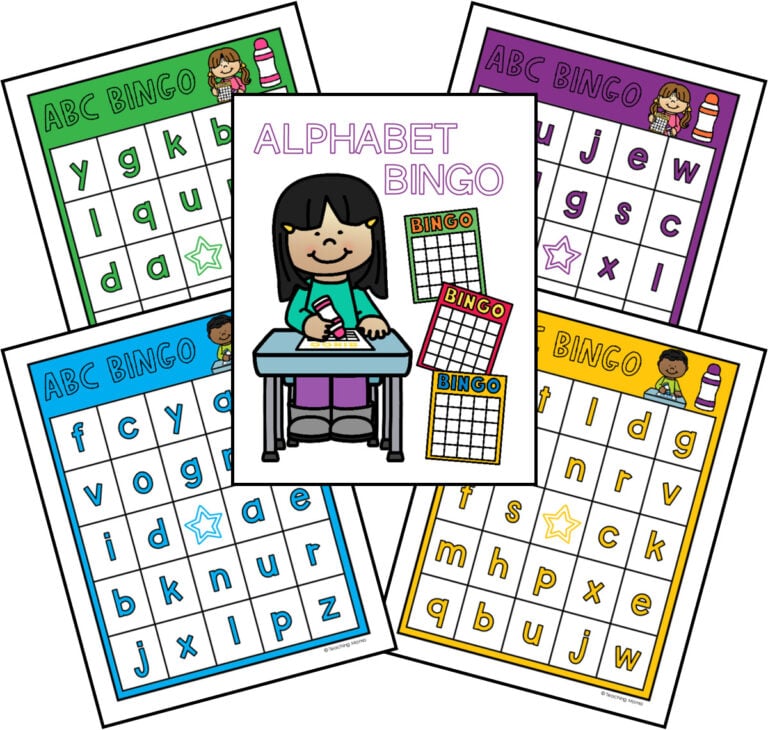
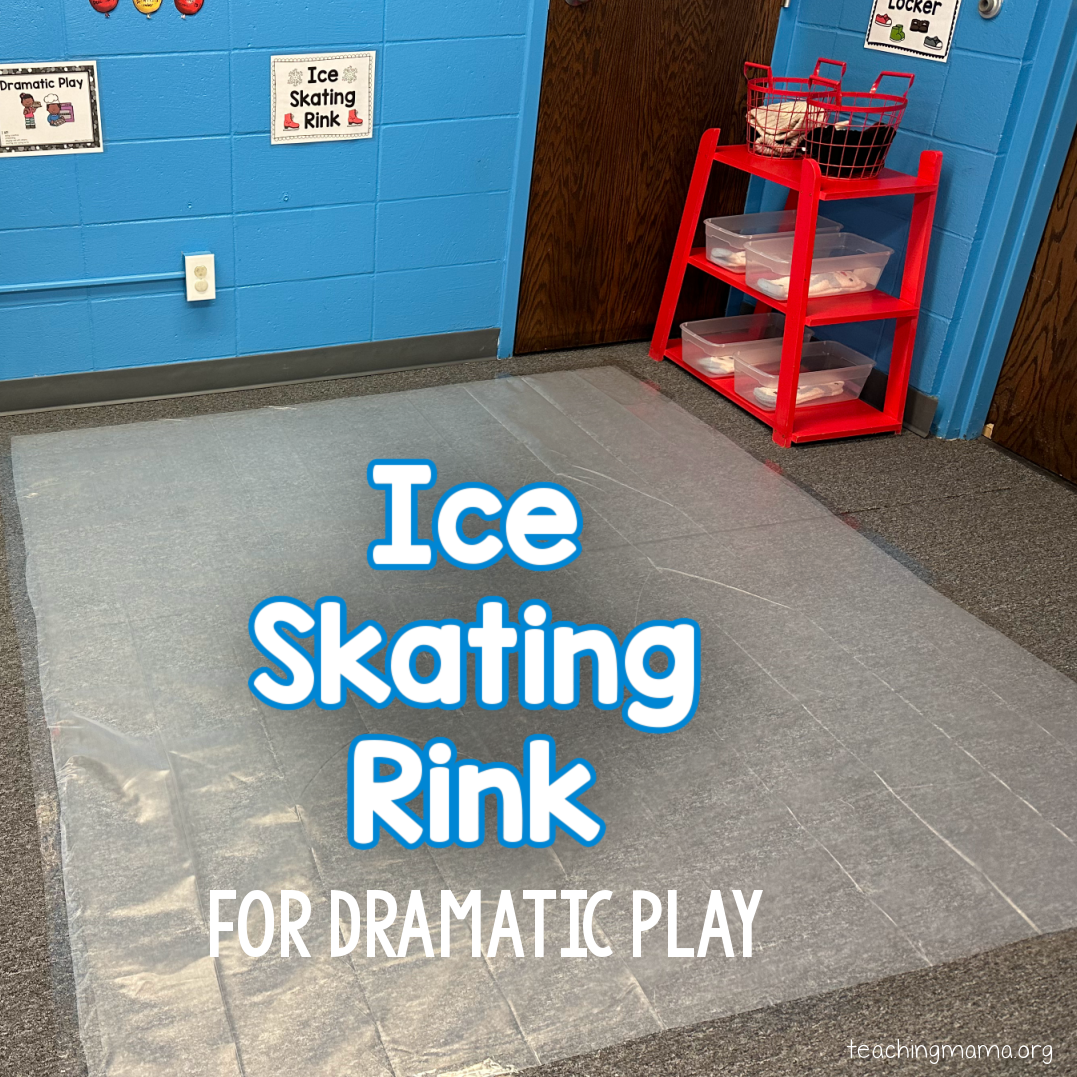
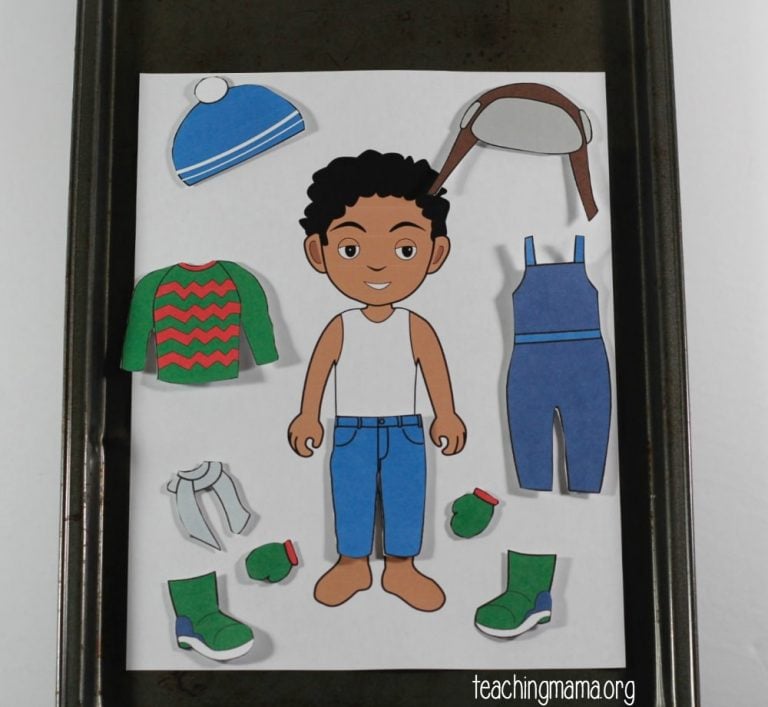
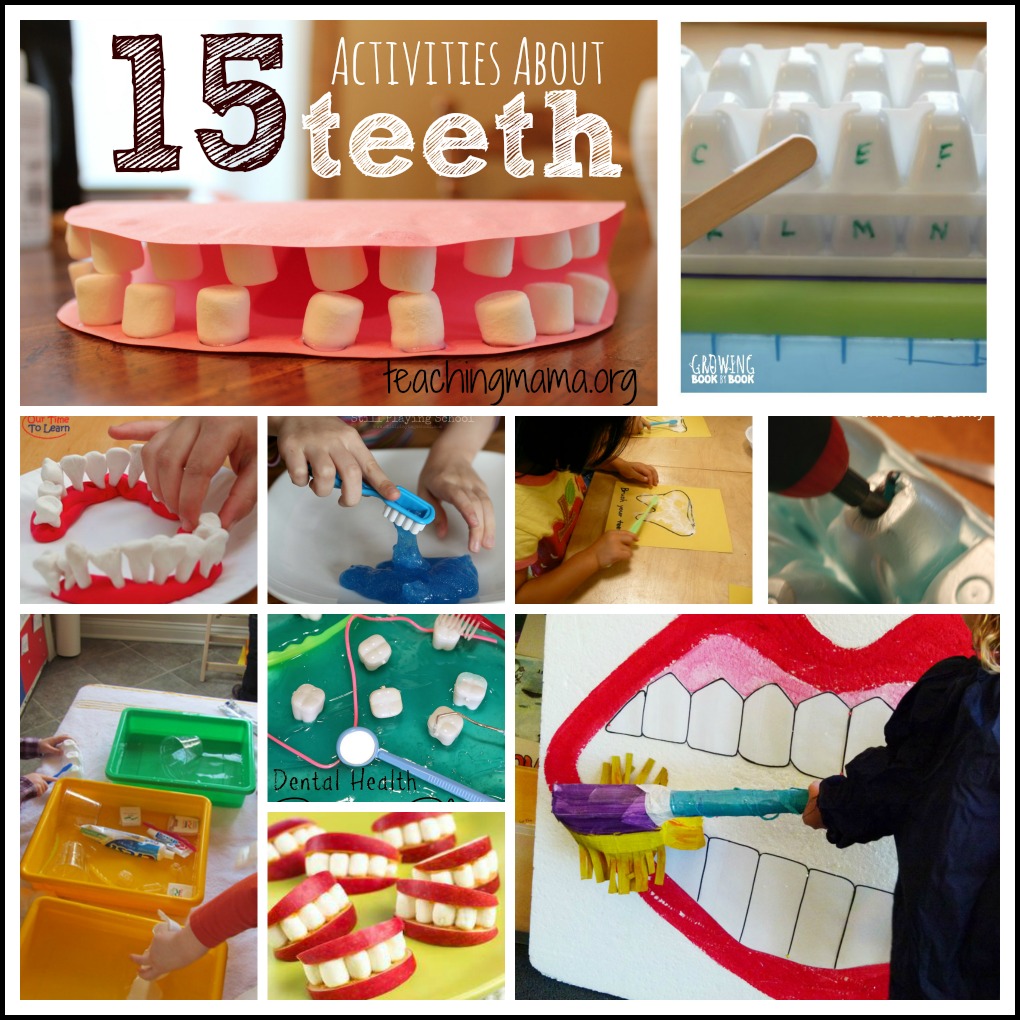
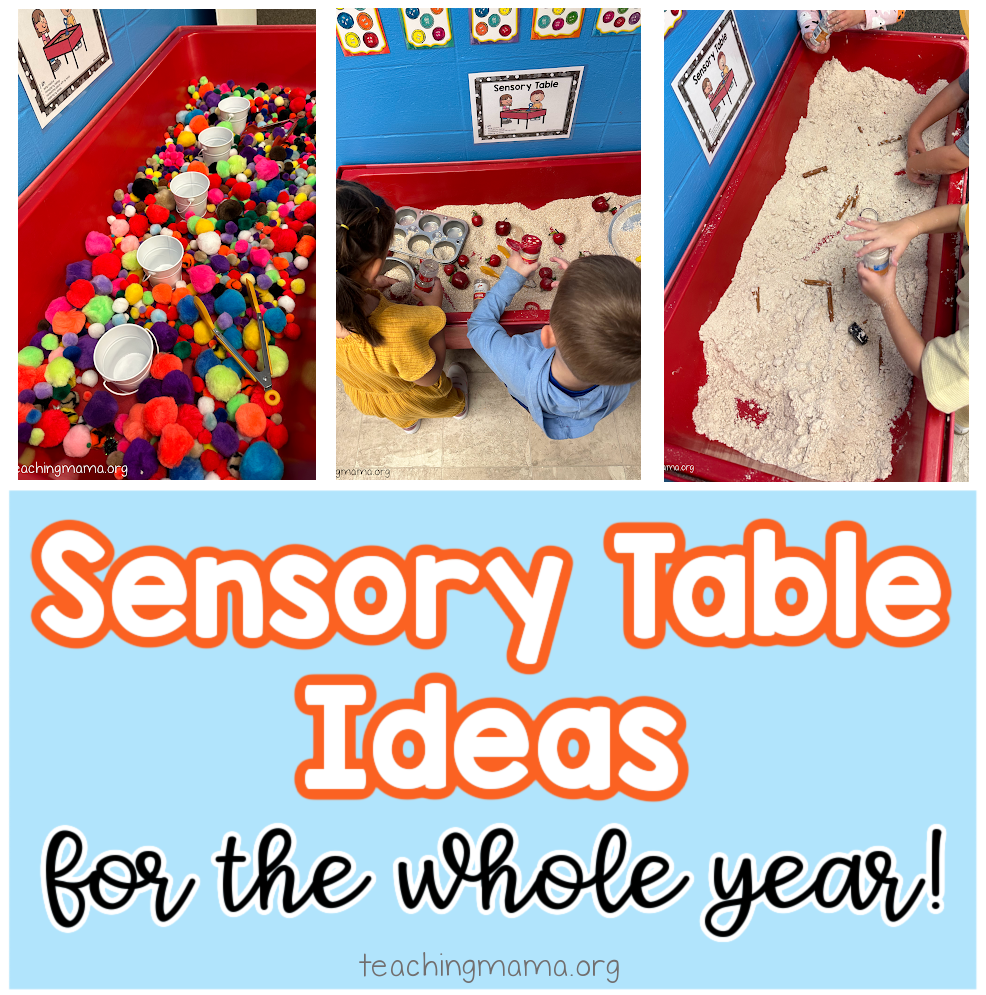


I loved the sandpaper idea the most! It is such a great sensory activity too!
Thanks for your helpful ideas.
Any tips for teaching English alphabet as a foreign language?
Best wishes…
I wish I had ideas, but I don’t have any resources right now.
Thank you for your posts! I’m currently working on letter recognition with my preschooler. These ideas have been helpful.
Thanks for the printable, but I can’t download it. Clicking on the button does not appear the pdf.
I love using these markers! For math centers Letter practice, working on fine motor skills and art! Thanks for the printable!!
I was concerned that my daughter is already 2 yr and 1 mo but she is not yet learning the alphabet and doesn’t seem to be interested with it while other kids are already learning the alphabet before turning 2 but I was happy that you recommend to start teaching kids at two as Im not yet too late. I dont have any teaching background so I am not sure what would interest my child in studying.
I’m glad to hear that! She is doing just fine 🙂
How many letters do you introduce at a time so they could remember them and for how many days to you go over those letters before starting new ones?
Hi! I teach 3 1/2 year olds. I have made sandpaper letters and was very interested in your 3-period lesson description, especially Step 2. Wonderful.
I do want to mention that one year I taught just the letter sound as I showed the letter. Four months later that year I decided to add the letter name. Boy, that was disheartening! The kids had a very hard time including the letter name after learning to say just the letter sound when they saw the letter. It was a rather bad experience. They eventually learned the letter names, too, but it was way harder for them than if I had just gone ahead and taught both sound and name together at the same time.
Now I teach the letter sound AND the letter name simultaneously. I say “/a/ and the name is ayyy”, /b/ and the name is beeee, etc. when I show the letter or when I pull out a sandpaper letter and the child traces the letter. The child still automatically says the sound first when they see that letter, but they follow up with the letter name. Because I have such a long chant for them to say when they see the letter, and they say the SOUND first, it’s easy for them to shorten the chant to just the sound when we sound out the letters in, say, the title of the book I am about to read to them.
thanks for all you do. I love and have copied out the instructions for some of those sensory bins and bottles, and will be using them in my room. THANKS AGAIN!
I love this advice! Thank you for sharing your experience and thoughts. So helpful! And I’m very glad my website is useful to you! 🙂
I would love to win the sandpaper letters. I have a lot of alphabet activities. Do they have lowercase as well?
I put letters and numbers in small rubber duckies and used them in a sensory table as a game as well.
can anyone help me w with these materials? my phone can’t download
my email [email protected]
What materials are you needing?
Thank you very much for this article, I think it is very helpfull. I am a Spanish native speaker but I am studying English Language teaching. The reason why I found your post very interesting is that I am also a young mom and I would like that my baby boy has two mother tongues, English and Spanish, and thanks to your post and experience I had now different easy ways to start teaching English to my baby in a more natural way, just as the native English speakers.